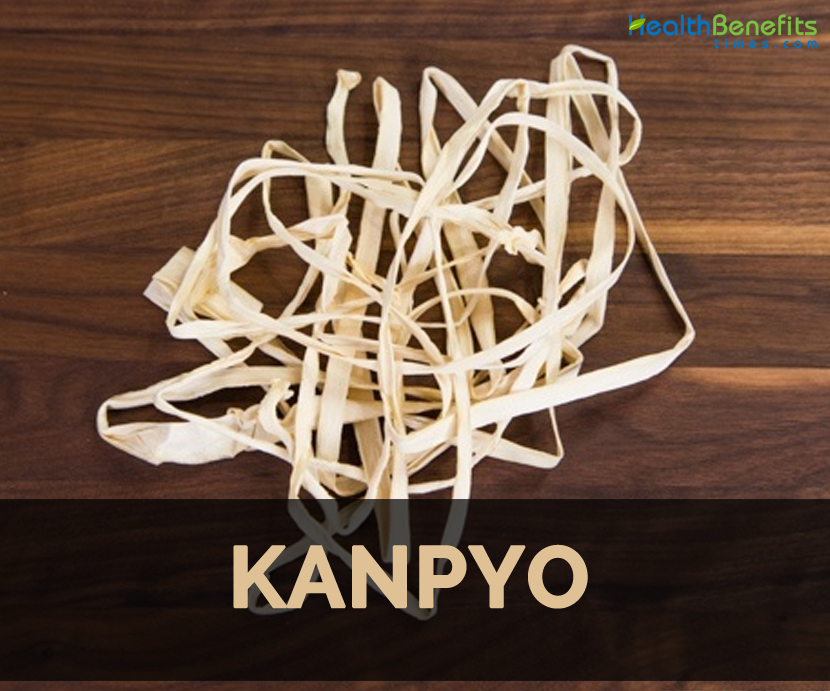It is an ingredient used in traditional Edo style Japanese cuisine. Kanpyo is used commonly in Futomaki sushi roll. The flesh is cut into strips of 3 mm thick and 3 mm wide and then dehydrated or dried in sun. Due to its delicious taste and uniqueness, it is appeared in various Japanese dishes such as marinated Aemono and stewed Nimono foods. Kanpyo is flavored with sugar, soy sauce, mirin, dashi and other ingredients when using it for sushi. It is used as a crucial ingredient for Futomaki sushi rolls.
History
Before 280 years, in second year of Shotoku epoch the feudal Tadahide Torii was the owner of land in Omi province acknowledges another land in Simotsuke province. He left Manakuchi for Mibu and orderd to deliver the Kampyo seeds from Manakuchi to Mibu.
There are another versions of kampyo origin, but we don’t have any truth worthy information nowadays. The most famous manufacturer of kampyo is the south of Tochigi prefecture (Ishibashi, Minamikawachi, Kokubunji and Mibu). Among all the areas of Japan, this area is the most acceptable for the kampyo’s cultivation.
References:
https://en.wikipedia.org/wiki/Kanpy%C5%8D_(food)
http://japan-brand.jnto.go.jp/foods/other_food/29/
http://welovejapanesefood.com/what-is-kanpyo/
Comments
| Kanpyo Quick Facts | |
|---|---|
| Name: | Kanpyo |
| Calories | 70 Kcal./cup |
| Major nutrients | Iron (17.25%) Zinc (14.36%) Vitamin B5 (13.78%) Carbohydrate (13.51%) Manganese (13.35%) |
| Proximity | Amount | % DV |
|---|---|---|
| Water | 5.39 g | N/D |
| Energy | 70 Kcal | N/D |
| Energy | 291 kJ | N/D |
| Protein | 2.32 g | 4.64% |
| Total Fat (lipid) | 0.15 g | 0.43% |
| Ash | 1.58 g | N/D |
| Carbohydrate | 17.56 g | 13.51% |
| Total dietary Fiber | 2.6 g | 6.84% |
| Minerals | Amount | % DV |
|---|---|---|
| Calcium, Ca | 76 mg | 7.60% |
| Iron, Fe | 1.38 mg | 17.25% |
| Magnesium, Mg | 34 mg | 8.10% |
| Phosphorus, P | 51 mg | 7.29% |
| Potassium, K | 427 mg | 9.09% |
| Sodium, Na | 4 mg | 0.27% |
| Zinc, Zn | 1.58 mg | 14.36% |
| Copper, Cu | 0.117 mg | 13.00% |
| Manganese, Mn | 0.307 mg | 13.35% |
| Selenium, Se | 0.7 µg | 1.27% |
| Vitamins | Amount | % DV |
|---|---|---|
| Water soluble Vitamins | ||
| Vitamin B2 (Riboflavin) | 0.012 mg | 0.92% |
| Vitamin B3 (Niacin) | 0.783 mg | 4.89% |
| Vitamin B5 (Pantothenic acid) | 0.689 mg | 13.78% |
| Vitamin B6 (Pyridoxine) | 0.144 mg | 11.08% |
| Vitamin B9 (Folate) | 16 µg | 4.00% |
| Folate, food | 16 µg | N/D |
| Folate, DEF | 16 µg | N/D |
| Vitamin C (Ascorbic acid) | 0.1 mg | 0.11% |
| Lipids | Amount | % DV |
|---|---|---|
| Fatty acids, total saturated | 0.012 g | N/D |
| Palmitic acid 16:00 (Hexadecanoic acid) | 0.009 g | N/D |
| Stearic acid 18:00 (Octadecanoic acid) | 0.004 g | N/D |
| Fatty acids, total monounsaturated | 0.028 g | N/D |
| Oleic acid 18:1 (octadecenoic acid) | 0.028 g | N/D |
| Fatty acids, total polyunsaturated | 0.066 g | N/D |
| Linoleic acid 18:2 (octadecadienoic acid) | 0.066 g | N/D |



